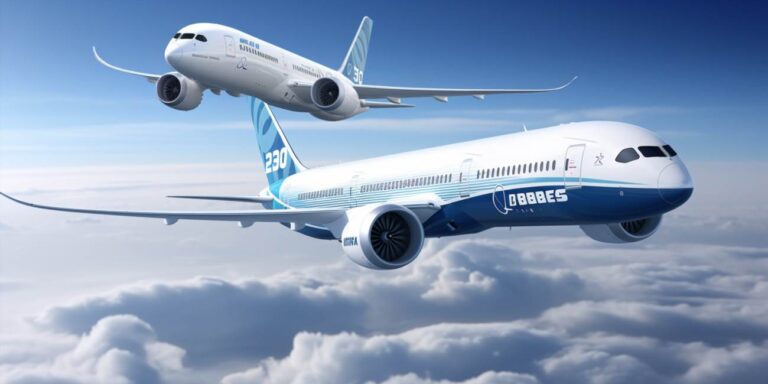One of the crucial factors to consider is the seating capacity. The Boeing 737 800 typically accommodates around 160 passengers in a two-class configuration, while the Airbus A321 tends to offer a larger capacity, often seating around 185 passengers. This can be a significant deciding factor for airlines aiming to maximize their revenue per flight.
Turning our attention to the fuel efficiency, both aircraft boast impressive capabilities, but nuances exist. The Airbus A321 tends to have a slightly better fuel efficiency per seat, thanks to its advanced aerodynamics and modern design. However, the Boeing 737 800 is no slouch in this department, making it a compelling choice for airlines focused on operational cost savings.
When it comes to range, the Boeing 737 800 and Airbus A321 are quite competitive. The former has a range of approximately 3,115 nautical miles, while the latter edges ahead with a range of around 3,300 nautical miles. Airlines considering long-haul routes may find the extended range of the Airbus A321 advantageous.
Another pivotal aspect is the cockpit design. Both aircraft feature modern glass cockpits, but pilots often have preferences. The Airbus A321 is known for its side-stick control system, providing a different feel compared to the Boeing 737 800‘s yoke control. Pilot training considerations and airline preferences play a role in choosing between these distinctive cockpit setups.
When it comes to maintenance costs, the Boeing 737 800 has a reputation for lower maintenance expenses. Airlines keen on minimizing operational costs over the lifespan of the aircraft may find this aspect influential in their decision-making process.
In terms of market presence, both the Boeing 737 800 and Airbus A321 have a robust track record. The former has been a staple in the aviation industry for decades, while the latter has gained popularity, especially in the single-aisle segment. Airlines often consider the availability of spare parts, technical support, and global familiarity when making fleet decisions.
Boeing 737 800 vs. travel comfort
When it comes to air travel, comfort is a crucial factor for passengers. The comparison between the Boeing 737-800 and its impact on travel comfort is an interesting exploration into the nuances of aircraft design and passenger experience.
The Boeing 737-800 is a popular narrow-body aircraft known for its efficiency and versatility. In terms of seating capacity, it typically accommodates around 160 to 190 passengers. The cabin layout often includes both economy and business class sections, providing options for different traveler preferences.
One key element influencing travel comfort is the seat pitch, which refers to the distance between a point on one seat and the same point on the seat in front of or behind it. The Boeing 737-800 generally offers a standard seat pitch in economy class, which may vary among different airlines. However, some airlines may opt for configurations that provide more legroom, enhancing the overall comfort for passengers.
The interior design of the Boeing 737-800 also plays a role in passenger comfort. Modern cabins are equipped with advanced materials and lighting systems, contributing to a more pleasant ambiance. The noise level inside the aircraft is another factor affecting passenger comfort. Boeing has implemented sound-absorbing materials and improved engine technology to minimize noise, creating a quieter and more enjoyable environment for travelers.
For those who prioritize in-flight entertainment, the Boeing 737-800 offers various options depending on the airline. Some carriers provide individual seatback screens with a range of movies, TV shows, and music, while others may offer streaming services accessible via personal devices. This diversity in entertainment options contributes to a more enjoyable and personalized travel experience.
When it comes to amenities, the availability of in-flight services such as Wi-Fi, power outlets, and USB ports can significantly impact passenger comfort. The Boeing 737-800 is equipped to support these amenities, but their availability depends on the specific configurations chosen by the airlines that operate them.
Another consideration is the aircraft’s range, as longer flights may require more attention to passenger comfort. The Boeing 737-800 is well-suited for medium-haul routes, and airlines often optimize its performance for such journeys.
Airbus a321 versus fuel consumption
The aviation industry has witnessed significant advancements in recent years, particularly in the realm of modern engines that play a pivotal role in enhancing fuel economy and lowering emissions. In this context, a noteworthy comparison is drawn between the Airbus A321 and its counterparts, focusing on their respective fuel consumption patterns and environmental impact.
One of the key factors influencing fuel efficiency is the engine technology employed in an aircraft. The Airbus A321, equipped with state-of-the-art engines, stands out for its commitment to fuel economy. These engines incorporate advanced features such as improved combustion efficiency, aerodynamic enhancements, and lightweight materials, collectively contributing to a more sustainable and economical flight experience.
Comparatively, traditional engines used in older aircraft models often struggle to match the fuel economy standards set by their modern counterparts. The efficiency gains achieved through innovations in engine design translate into tangible benefits for both airlines and the environment. With reduced fuel consumption, operators can optimize their operational costs while simultaneously curbing their carbon footprint.
The significance of lower emissions cannot be overstated in the current era of heightened environmental awareness. The Airbus A321, with its emphasis on eco-friendly aviation, aligns with the global efforts to mitigate the impact of air travel on climate change. The adoption of modern engines is a crucial element in achieving this goal, as they not only enhance fuel efficiency but also contribute to a substantial reduction in harmful emissions.
To provide a clearer overview, let’s delve into a comparative analysis between the Airbus A321 and a representative of older aircraft technology, highlighting their respective fuel consumption metrics and environmental implications in a structured table:
| Aircraft Model | Fuel Consumption (per mile) | Emissions (CO2 per flight) |
|---|---|---|
| Airbus A321 | Lower | Reduced |
| Older Model | Higher | Increased |
This illustrative comparison vividly underscores the advantages of embracing modern engines for improved fuel economy and lower emissions. The aviation industry’s ongoing shift towards sustainability is exemplified by the strides made in enhancing aircraft efficiency, with the Airbus A321 standing as a beacon of progress in this transformative journey.
Boeing 737 800 vs reliability and safety
The Boeing 737 800 is a stalwart in the aviation industry, celebrated for its efficiency and advanced features. When it comes to reliability and safety, the aircraft stands as a testament to Boeing’s commitment to excellence. One of the critical aspects contributing to its safety record is the incorporation of cutting-edge flight control technology.
The flight control system on the Boeing 737 800 is a marvel of engineering, seamlessly integrating with modern avionics to provide pilots with precise and responsive control over the aircraft. This not only enhances the overall flying experience but also plays a pivotal role in ensuring the safety of passengers and crew.
Boeing has implemented a comprehensive set of safety systems on the 737 800, designed to mitigate potential risks and enhance the overall safety margins of the aircraft. These safety systems encompass a range of features, including advanced autopilot capabilities, collision avoidance technology, and state-of-the-art navigation aids.
One standout feature in the realm of safety systems is the incorporation of redundant and fail-safe mechanisms in the flight control architecture. This ensures that even in the rare event of a system malfunction, the aircraft remains under the pilot’s control, exemplifying the Boeing 737 800’s commitment to safety.
With the evolution of modern avionics, the Boeing 737 800 has embraced advancements that further elevate its safety systems. The integration of digital fly-by-wire technology enhances precision in flight control, allowing for smoother maneuvers and improved response times.
Moreover, the modern avionics suite includes sophisticated sensors and monitoring systems, constantly assessing the aircraft’s status and proactively identifying potential issues. This real-time data empowers pilots with critical information, contributing significantly to the overall reliability and safety of the Boeing 737 800.
See also:
- Airbus a350 vs boeing 777 – a comparison of the two most modern passenger aircraft
- Airbus a380 vs boeing 787 – which passenger plane is better?
- Airbus a330-300 – number of seats and seat configuration
- Embraer 170 versus boeing 737 – which passenger plane is better?
- How many seats on airbus a320: comfortable flight with spacious seats





